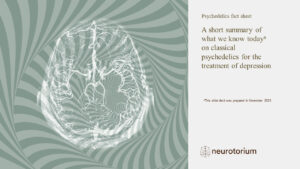Index for
slide deck
Introduction
-1024x576.jpg)
Epidemiology and Burden
-1024x576.jpg)
Depression is a highly prevalent disorder
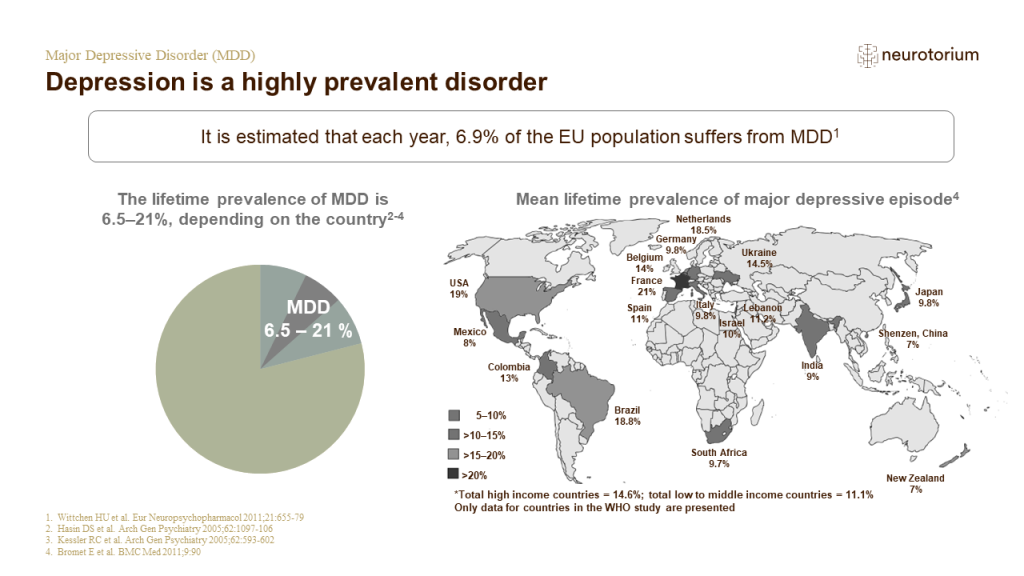
Depression is a highly prevalent disorder
Lifetime prevelance: The proportion of individuals in a population that at some point in their life up to the time of assessment have experienced MDD.
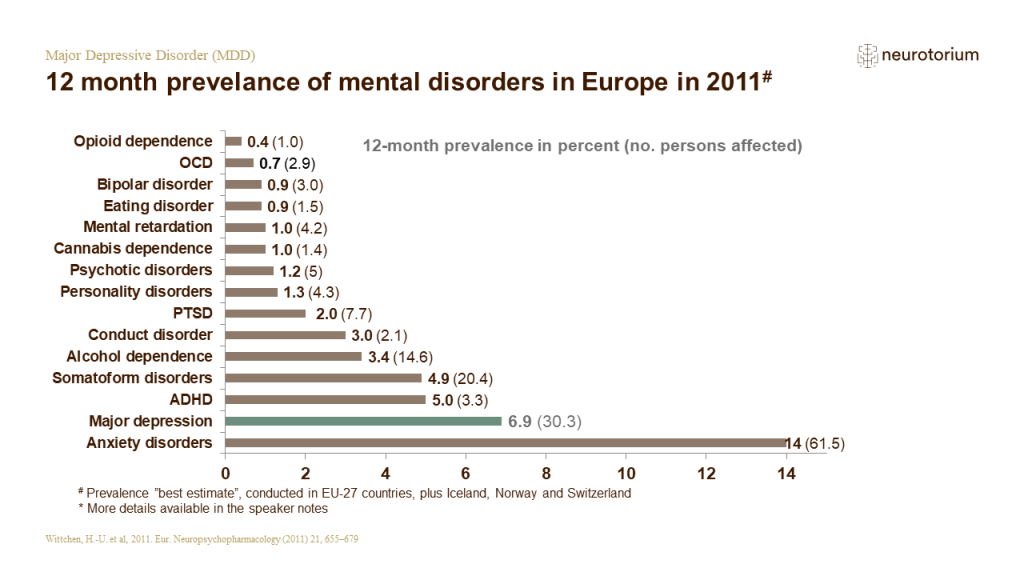
12 month prevelance of mental disorders in Europe in 2011
This slide provides data on the current (2011) size of mental disorders and neurological disorders for the EU. 12 month prevalence data are based on a complex interdisciplinary effort, structured literature reviews, re-analyses of existing data sets, and appraisals. The r…
Burden
-1024x576.jpg)
Burden of Major Depressive Disorder (MDD)
-1024x576.jpg)
WHO Fact Sheet
Source:
Depression. Factsheet no. 369. Available at:
https://www.who.int/mediacentre/factsheets/fs369/en/. Accessed April 2016.
-1024x576.jpg)
MDD is a leading cause of burden
MDD has a worldwide prevalence of 4.4%, corresponding to 298 million people (estimate from 2010 Global Burden of Disease Study[GBDS]).[Ferrari et al., PLoS One 2013] Overall, prevalence is higher in females (5.5%) than in males (3.2%), corresponding to 187 million females…
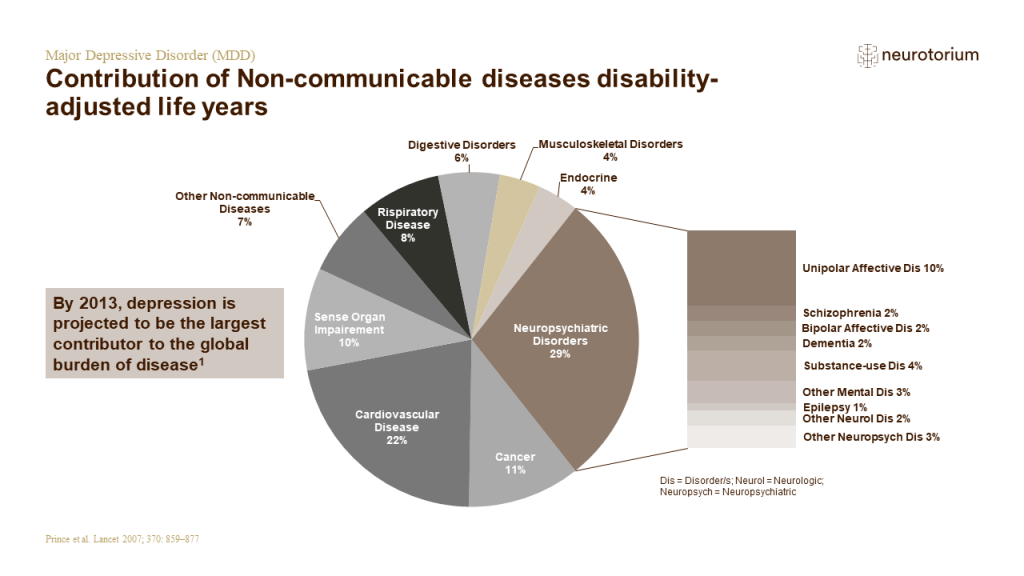
Contribution of Non-communicable diseases disability-adjusted life years
Amongst the classes of non-communicable disease, neuropsychiatric disorders are the largest contributor to the global disease burden, accounting for 28% of disability-adjusted life years (DALYS) – ahead of cardiovascular disease (22%) and cancer (11%).[Prince et al., 2007…
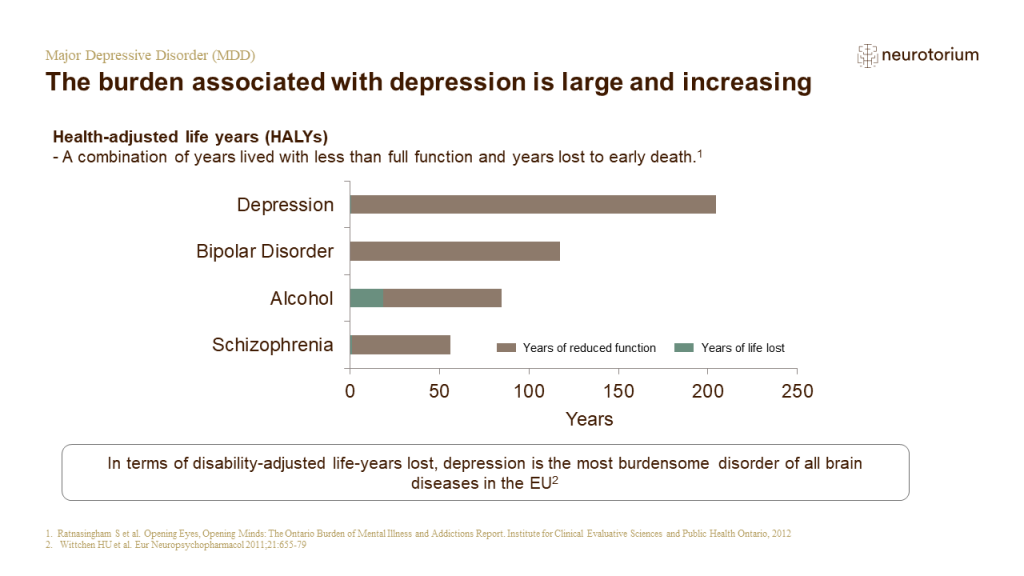
The burden associated with depression is large and increasing
-1024x576.jpg)
Depression is the most burdensome disorder of all brain diseases in the EU
The DALY is a health gap measure for burden of disease, capturing both years of life lost due to premature mortality and years of life lost due to living with disability. Overall, the burden of disease in mental and other disorders of the brain is mainly due to disability…
-1024x576.jpg)
Depression has detrimental effects on overall health
-1024x576.jpg)
Depression is associated with significant personal and societal consequences
-1024x576.jpg)
The personal burden of MDD can be significant and wide-ranging
-1024x576.jpg)
MDD has significant costs to society
This slides illustrates the global social burden of MDD. The data are based on a systematic review of epidemiological data by Ferrari et al 2013. For this data were pooled using a Bayesian meta-regression. These weights were used to calculate years lived with disability (…
-1024x576.jpg)
MDD has significant costs to society: EU
This slides illustrates European burden of MDD with a focus on costs inferred due to impact on work.
Note that:
Absenteeism = lost days of work.
Presenteeism = low performance while at work, which is transformed into lost day equivalents
References:
Hughes S. MEP: Depres…
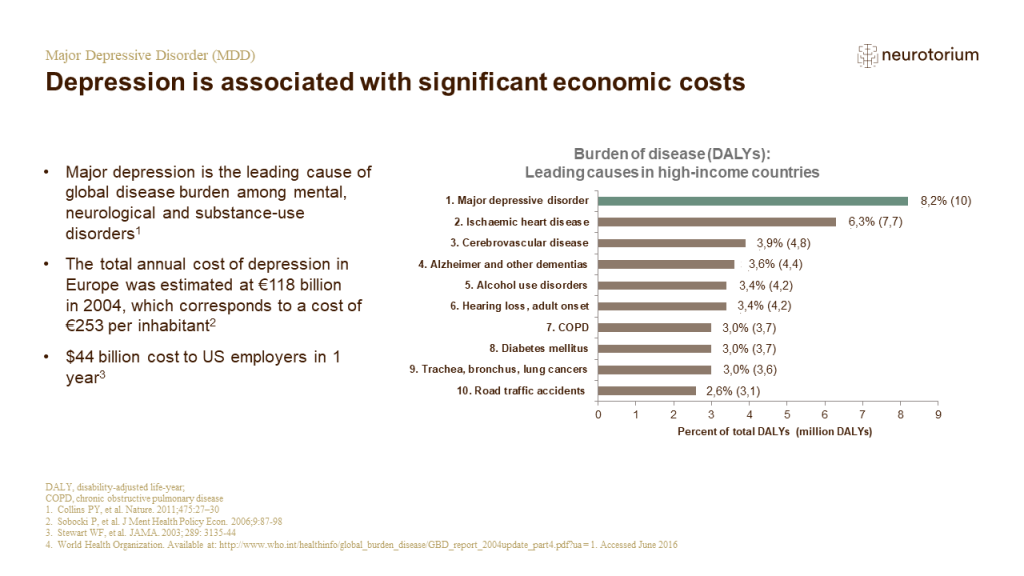
Depression is associated with significant economic costs
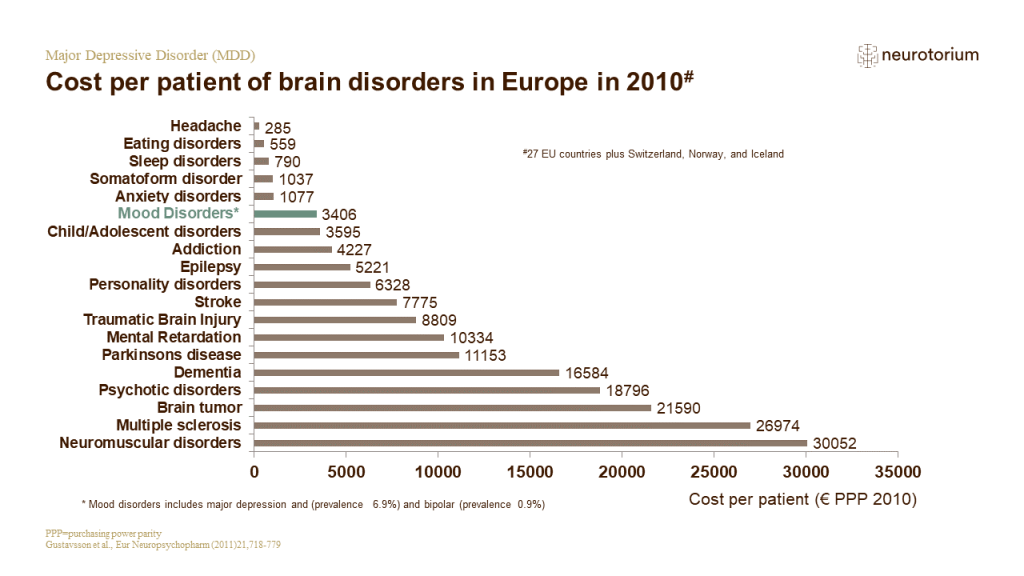
Cost per patient of brain disorders in Europe in 2010
This slide shows the cost per patients of selected mental disorders in Europe in 2010. The report covers the 27 EU countries plus Switzerland, Norway, and Iceland. The wider spectrum of mood disorders (also labeled affective disorders), include two particularly important …
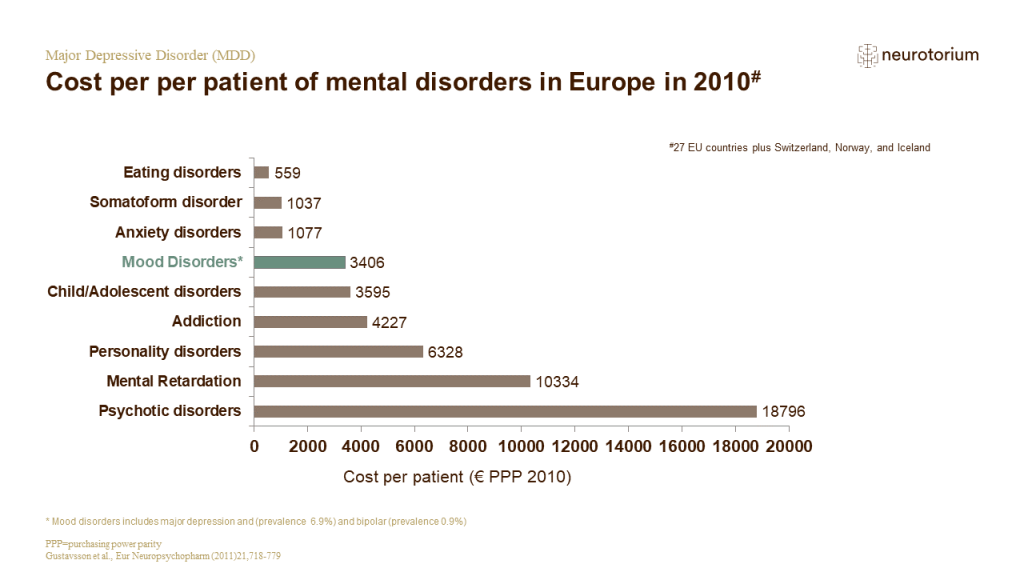
Cost per per patient of mental disorders in Europe in 2010
This slide shows the cost per patient of selected mental disorders in Europe in 2010. The report covers the 27 EU countries plus Switzerland, Norway, and Iceland. The wider spectrum of mood disorders (also labeled affective disorders), include two particularly important d…
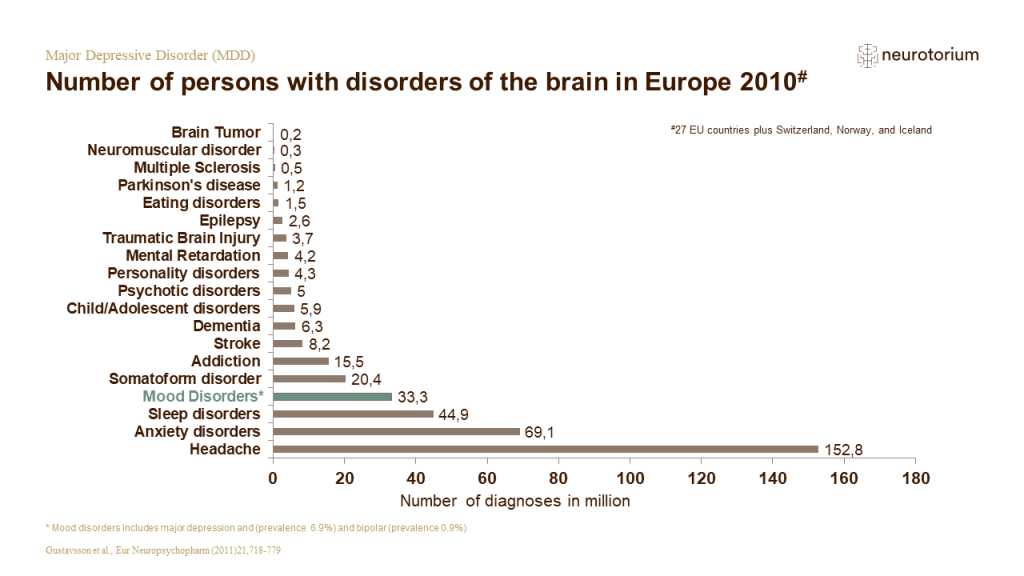
Number of persons with disorders of the brain in Europe 2010
This slide shows the number of persons with disorders of the brain in Europe. The report covers the 27 EU countries plus Switzerland, Norway, and Iceland. The wider spectrum of mood disorders (also labeled affective disorders), include two particularly important diagnoses…
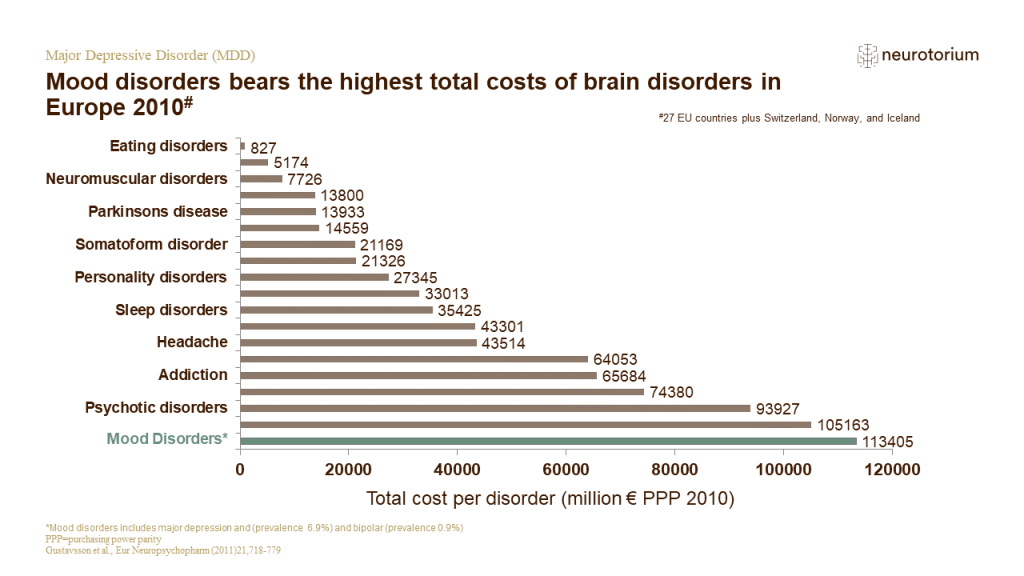
Mood disorders bears the highest total costs of brain disorders in Europe 2010
This slide shows the cost per diagnosis of selected mental disorders in Europe in 2010. Due to the relative high number of persons diagnosed and the relative high cost per patient, mood disorders ranks as number 1 of the diseases contributing to the total costs of mental …
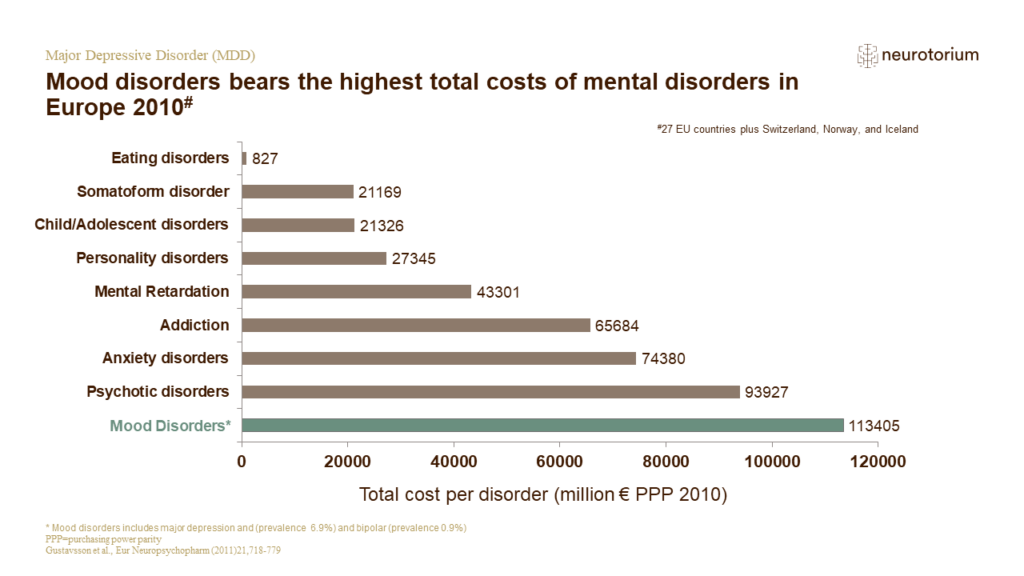
Mood disorders bears the highest total costs of mental disorders in Europe 2010#
This slide shows the cost per diagnosis of selected mental disorders in Europe in 2010. Due to the relative high number of persons diagnosed and the relative high cost per patient, mood disorders ranks as number 1 of the diseases contributing to the total costs of mental …
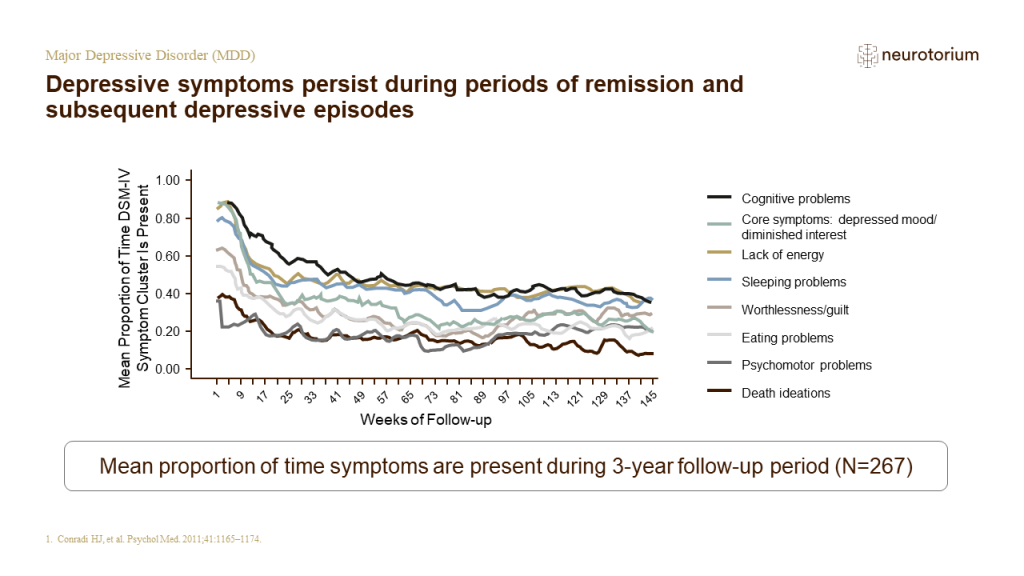
Depressive symptoms persist during periods of remission and subsequent depressive episodes
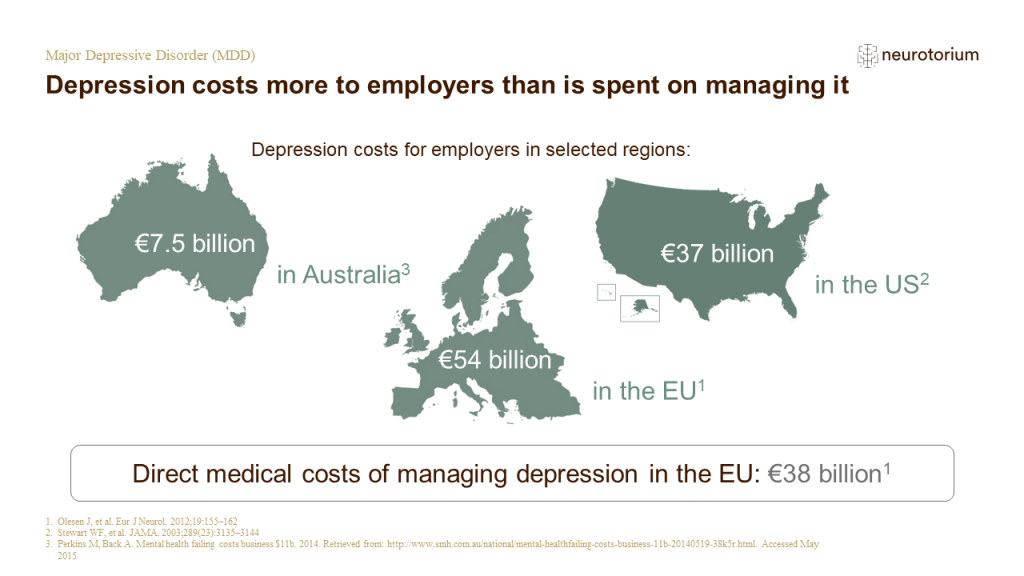
Depression costs more to employers than is spent on managing it
-1024x576.jpg)


